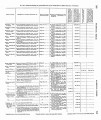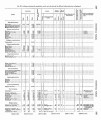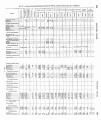| OCR Text |
Show 4 REPORT OF THE COMMISSIOXER OF INDIAN AFFAIRS. kc., and the government agrees to expend for their benefit, for forty years, the sum of ten dollars per head per year until they concentrate upon a reservation, and fifteen dollars thereafter. Their numbers are fixed at 4,000 until a census shall he taken. As the district assigned to these Indians is all in Texas or the Indian country, special arrangements must he eventually made with the parties owning the lnnds,when these tribes are required to eoncentrate in o ~ lo~caeli ty. ' Osages : Ooncluded with them September 29,1865, by Cominissioner Cooley and Superintendent Sells ; ratification advised by the Sen~tew, ith amend-ments, and amendments sent to them by their agent, Mr. Snow, early in Sep-tember for their a9sent. The amendments make no material change, and were accepted by the Indians September 21, 18GG. This treaty is one of great im-portance, as by it the Indians cede a large quantity of valuable land which the settlers in Kansas have for some time desired to possess, while its sale makes a handsome provision for the wants of the Indians. . The treaty, in the first place cedes to the United States a tract about thirty miles in width, fromeast to west from the east end of the Osage lands, and adjoining the Cherokee neutral lands which have been placed in market. Until the settlement of the location of the southwest corner of this tract, its precise area cannot be etated, but it will prob-ably be not less than 960,000 acres. For this the government is to pay $300,000, the interest of which, at five per cent.,is for the present to be used for the benefit of the Indians. The land is to he regularly surveyed and sold at public sale. After the government hxs been reimbursed the cost of the land and of the survey and sale, the balance realised is to he usedby the government as a fund for the civilization of Indians generally-a most beneficent provision, which is thus ha.ppily secured. Besides the tract above mentioned, the Osages cede to the government, iu trust, a tract twenty miles in width aloug the whole northern side of tbair re-maining reservation. This land, being about two hundred and thirty miles by twenty, or 2,944,000 acres, is to hesurvcyed and sold as other plihlic lands, and the avails invested, at five per cent. interest, for thebenefit of the Indians-eighty thousand dollars of the amount being specially set apart as a school fund. Pro-visions are made for lands to be reserved for their mission school, and the in-dians are to remove within their diminished reserve within six mont,hs from the ratification of the treaty. It is also provided that if future arrangcmeuts shall he made for removing the tribe entirely from ICansas into the Indian country, one-half of the proceeds of their land8 may be devoted to the purchase of their new home in that region. Dakota or Siouz Tndiaw: Nine treaties concluded last year with as many bands of Sioux, by the commission appointed by the President, consisting of Governor Edmunds, Snperinteildent Taylor, General Curtis, General Sibley, Rev. H. W. Reed, and Orrin Guernsey, were submitted to the Sendte, a ~ t~heidr ratification adviaed JIarch 5, 1SG6, and the treaties were pmclaimed Alarch 17, 1F66. Below is appended a list of the h a l ~ dth~u s treated with, with the esti-mated number of persons belonging to each hand : Two Kettles ......................................... 1,200 persons. Lower BrulBs.. ..................................... 1,200 persons. Onepxpas.. .:.. .................................... 1,800 persons. Minneeonjo~~s.... ................ .:. ................ 2,220 persons. Yanctonnais.. ............... -. .............. 2, 100 persons. Sans Arcs. ......................................... 1, GSO persons. Upper Yanctonnais.. ................................ 2,400 persons. Ogallallns .......................................... 2,100 persons. Blackfeet Sioux.. ................................... -1,320 p ersons. Total.. .................................. 16,020 persons. --. 4 t |























































































